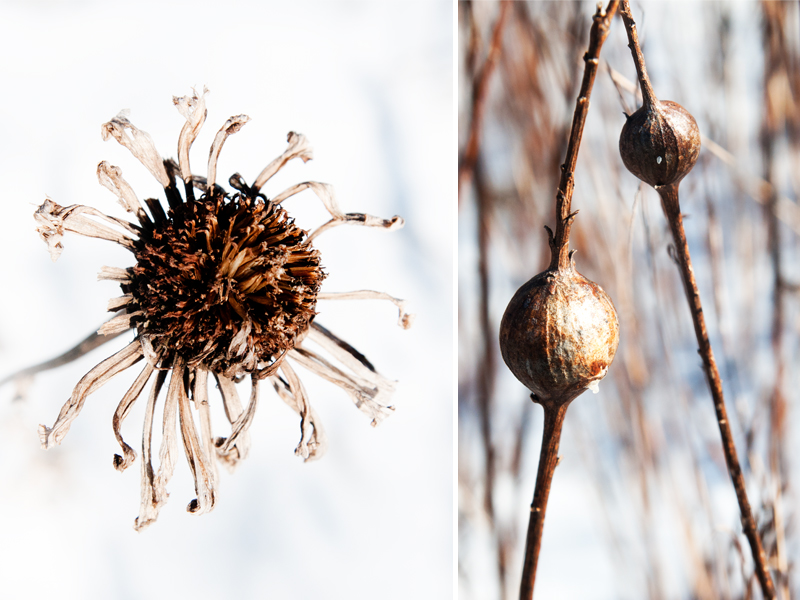T.S. Eliot believed April to be the cruelest month. I’ve long contended, however, that he was a month late. Where I live, in Central Pennsylvania, March brings both the random 60-degree day as well as punishing ice storms. It’s not unheard of to have 40-degree temperature swings within a 24 hour period, or to have flowering trees burst into bloom just in time to be covered in ice and snow. Such is life. While I wait for winter to well and truly be behind us, here’s how I hope to make use of the final days of winter.
Study Up
While my two favorite books—Xerces’ Attracting Native Pollinators (shameless plug) and Pollinators of Native Plantsby Heather Holm—are dog-eared to the point of oblivion, other books have gone unread, a slight that I intend to correct immediately.
I’ve now owned The Bees in Your Backyard by Joseph S. Wilson and Olivia Messinger Carril for more than a couple of seasons, meaning to use it each summer to improve my bee ID knowledge, but allowing it to languish indoors while I spend time weeding rather than reading. For a non-scientist, it’s an approachable guide with lots of photographs, easily digested, and with plenty of informational tidbits to make it an engaging read.

In the same vein I am looking forward to reading Beetles of Eastern North America by Arthur V. Evans. As equally attractive as it is informative, I hope it will inspire me to take a closer look at these insects that are so numerous and yet so easily escape my notice.
There’s no shortage of guides available on all manner of invertebrates – some regional, some expansive in their scope.
Appreciate the Winter Landscape
Spring, summer, and fall certainly offer no end of pleasures for the senses. Winter may require a little more effort, but happens to be my favorite time to visit the meadows, parks, and hiking trails I so enjoy the rest of the year.
Winter provides the ability to appreciate the expanse of meadows buried in snow. Leaving material standing in my garden at the end of fall allows to me appreciate the beauty of seed heads all winter. Seed heads stand out against the white background of fresh snow like modern art and I enjoy attempting to identify plants from these desiccated reminders of last summer.
I also enjoy looking for goldenrod “golf balls” in winter. Goldenrod galls are round structures found along goldenrod stems. Perfectly round, the spheres look as if the plant attempted to swallow a golf ball. These galls are caused by a fly species (Eurosta solidaginis) which lays a single egg on the tip of growing goldenrod. Once it emerges, the larva burrows into the stem of the growing goldenrod. The larva causes inflammation in the growing plant, causing an orb to swell around the larva. The larva happily eats the plant material, excavating a comfy home as well as an exit tunnel before pupating and settling in for a long winter’s nap.

Once the gall is created however, it attracts all manner of invaders, from parasitic wasps to predatory beetles, and even hungry woodpeckers. According to this article the larger the goldenrod gall is, the more likely it is to be attacked by birds and other invaders. Enterprising investigators, or those who have plumbed the depths of winter boredom and are looking for some excitement, can collect and dissect goldenrod galls to examine the life inside.
Leave the Garden Alone, but go after Woody Plants and Pruning
Each year we implore gardeners to rest their itchy pruning fingers and leave the leaves and standing material in their garden alone until warmer days later in the season. Winter can be a good time, however, to scout for and remove undesirable trees, shrubs, vines, and other invasive material. It’s far easier to identify these plants now than when buried in a sea of blooms.
Late winter is the best time for pruning of hardwood trees. Pruning while dormant reduces stress and the potential for attracting insect pests or disease. Waiting until late winter reduces the chance of winter injury.

While winter pruning is a good idea for most trees, for oaks, it’s essential to avoid a disease known as oak wilt, which is spread by sap-feeding insects such as beetles. Pruning oak trees in winter when these insects are not active is the best way to defend against the disease. Don’t wait too long though – many states advise not to prune after March 1st unless you’re in the colder northern states. As many oak tree species are long-lived and amongst the most beneficial butterfly and moth host plants available, we want to keep them happy and healthy.
While waiting out winter can be a struggle, it’s worth taking the time to enjoy the season before the watering, weeding, and insect IDing springs forth in the coming weeks.



